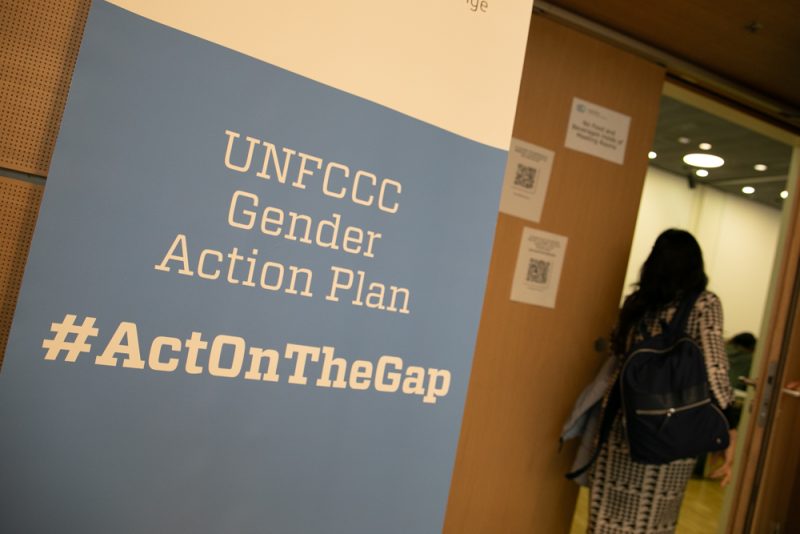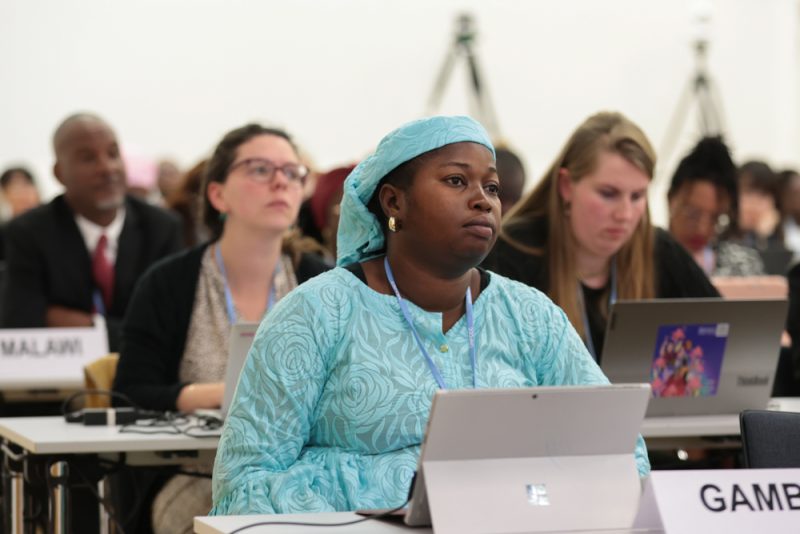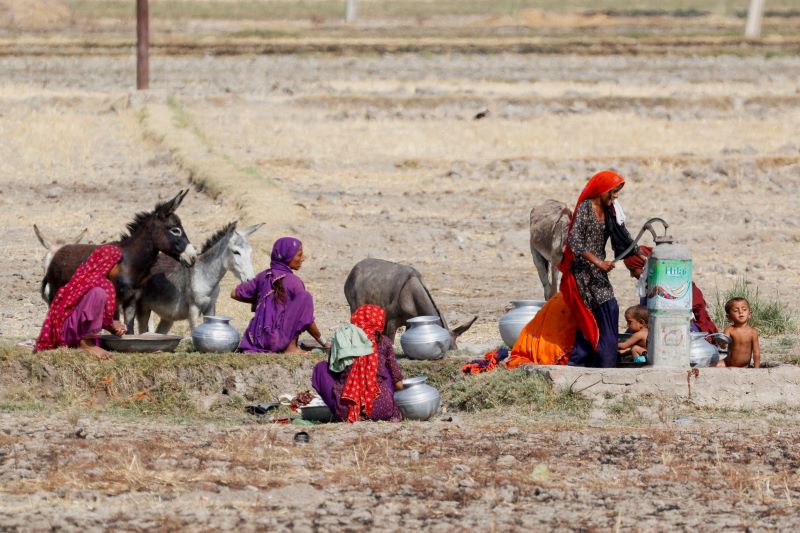At June’s Bonn talks, governments made little progress on gender equality while evidence shows women bear a heavy climate burden
In poor households without taps, the responsibility for collecting water typically falls on women and girls. As climate change makes water scarcer and they have to travel further and spend more time fetching it, their welfare suffers.
In a new study quantifying how gender shapes people’s experiences of climate change, scientists at the Potsdam Institute for Climate Impact Research (PIK) found that, by 2050, higher temperatures and changing rainfall patterns could mean women globally spend up to 30% more time collecting water.
PIK guest researcher Robert Carr, the study’s lead author, explained how this results in more physical strain, psychological distress and lost time that could otherwise be spent on education, leisure or employment.
“Even when people talk about gendered climate impacts, there is very little attention on time poverty and how that affects someone’s ability to improve their life,” Carr told Climate Home.
In addition, the cost of lost working time for women affects economies, and is projected to reach tens to hundreds of millions of US dollars per country annually by 2050, the study said.
Is water provision in drought-hit Zambia climate ‘loss and damage’ or adaptation?
Carr noted that the data underpinning PIK’s study only recently became available and is a valuable tool for connecting women’s welfare issues to climate impacts, with more such analysis expected as new datasets emerge.
“But more still needs to be done to act on, and implement, research findings like ours at the local and national levels,” he added.
For that to happen, research like PIK’s has to resonate in government offices and negotiating rooms at UN climate talks, where gender activists see 2024 as a milestone year. Countries are expected to renew key global initiatives for advancing gender-responsive climate action and improving gender balance in official delegations at UN negotiations.
Gendered impacts of climate change
So far progress has been slow. After more than a decade of working towards those aims within the UN climate process, wilder weather and rising seas are still disproportionately affecting women and gender-diverse people, as global warming continues apace.
For example, female-headed rural households experience higher income losses due to extreme weather events like floods and droughts, through impacts on farming and other activities.
Rates of child marriage and violence against women and girls have been shown to increase during and after climate disasters. And studies have identified a positive correlation between drought-induced displacement and hysterectomies among female farm labourers in India.
At the same time, barriers like caring responsibilities, lack of funding, difficulties in obtaining visas and even sexual harassment in UN spaces persist, standing in the way of women’s equal participation in the climate negotiating rooms.
Yet, despite the mounting urgency, governments made little progress in talks on gender issues at the mid-year UN conference in Bonn this month.

Delegates arrive for a workshop on implementing the UNFCCC gender action plan and on future work to be undertaken on gender and climate change, at the Bonn Climate Conference on June 3, 2024. (Photo: IISD/ENB – Kiara Worth)
Advocates had hoped to leave the German city with a new, stronger version of the UN’s flagship gender initiative, known as the Lima Work Programme on Gender (LWP). Instead, discussions were tense and slow, leaving the LWP – which is supposed to be renewed by 2025 – to be finalised in November at the COP29 climate summit in Azerbaijan.
No rise in women negotiators
Claudia Rubio, gender working group lead for the Women and Gender Constituency at the UN, said the LWP has enabled a better understanding of “what is prohibiting women and other genders from being in [UN negotiating] spaces”.
But Mwanahamisi Singano, senior global policy lead at the Women’s Environment and Development Organisation (WEDO), reminded delegates at a workshop in Bonn that “time has not been the magic ingredient in bridging disparities between women and men in participation”, which has “stagnated or even declined when it comes to COPs”.
According to data from WEDO, women made up only 34% of COP28 government delegations overall, the same percentage as 10 years ago. Azerbaijan’s initial men-only COP29 organising committee – to which women were hastily added after an international outcry – and its line-up of negotiators at Bonn were a case in point.
The UN’s own analysis of men and women’s relative speaking times at the negotiations shows that women often – though not always – speak less, and that themes such as technology and finance see consistently lower numbers for women’s participation.
Progress has been gradual even with programmes like WEDO’s Women Delegates Fund, which has financed hundreds of women – primarily from least developed countries and small island developing states – to attend UN climate talks. Since 2012, WEDO has also run ‘Night Schools’, training women in technical language and negotiation skills.
Gender in the NDCs
Increasing the gender diversity of decision-makers in UN negotiations is important in its own right, but it does not necessarily translate into more gender-responsive climate policy, experts said. Not all women negotiators are knowledgeable about the gender-climate nexus, they noted.
But having an international framework to boost gender-sensitive climate action has also “catalysed political will” at the country level, according to Rebecca Heuvelmans, advocacy and campaigning officer at Women Engage for a Common Future (WECF).

Delegates listen to discussions on the UNFCCC Gender Action Plan at the Bonn Climate Conference on June 4, 2024. (Photo: IISD/ENB – Kiara Worth)
This is evidenced by an increase in the number of official National Gender and Climate Change Focal Points – up from 38 in 2017 when UN climate talks first adopted a Gender Action Plan, to 140 across 110 countries today. While the precise role of these focal points depends on country needs, advocates say they have been pivotal in spurring action on national gender priorities.
So far, at least 23 countries have national gender and climate change action plans, and references to gender in national climate plans submitted to the UN, known as NDCs, have increased since the earliest commitments in 2016. Around four-fifths now include gender-related information, according to a UN review of the
Read More

